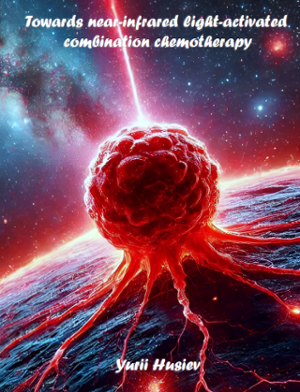Proefschrift
Towards near-infrared light-activated combination chemotherapy
The goal of the research presented in this thesis was to explore the chemical space of ruthenium(II) photocages, investigate their ability to host potent chemotherapy drugs, and to red shift the activation wavelength of the most promising PACT candidates to conduct biological studies.
- Auteur
- Y. Husiev
- Datum
- 20 maart 2025
- Links
- Thesis in Leiden Repository

At first, we developed a method for the ortho-amination of pyridine N-oxides, providing an easy access to valuable building blocks based on quinoline, bipyridine, naphthyridine, phenanthroline, biisoquinoline and terpyridine. We then used this tool to construct a family of the new pentadentate ligands and respective ruthenium complexes capable of caging different approved and experimental anticancer medications. The resulting prodrugs showed good response to longwave visible light, efficiently releasing drug moieties based on primary amines, thioethers, nitriles, pyridines, imidazo[1.2-b]pyridazines, β-carbolines, and imidazoles. The follow up in vitro studies confirmed the potential of this construct to be used against cancer. Additionally, we performed the modification of previously developed ruthenium based agent to be tested with red light in vivo, which demonstrated the convincing applicability of PACT in actual tumor treatment and set the ground for further preclinical development.
